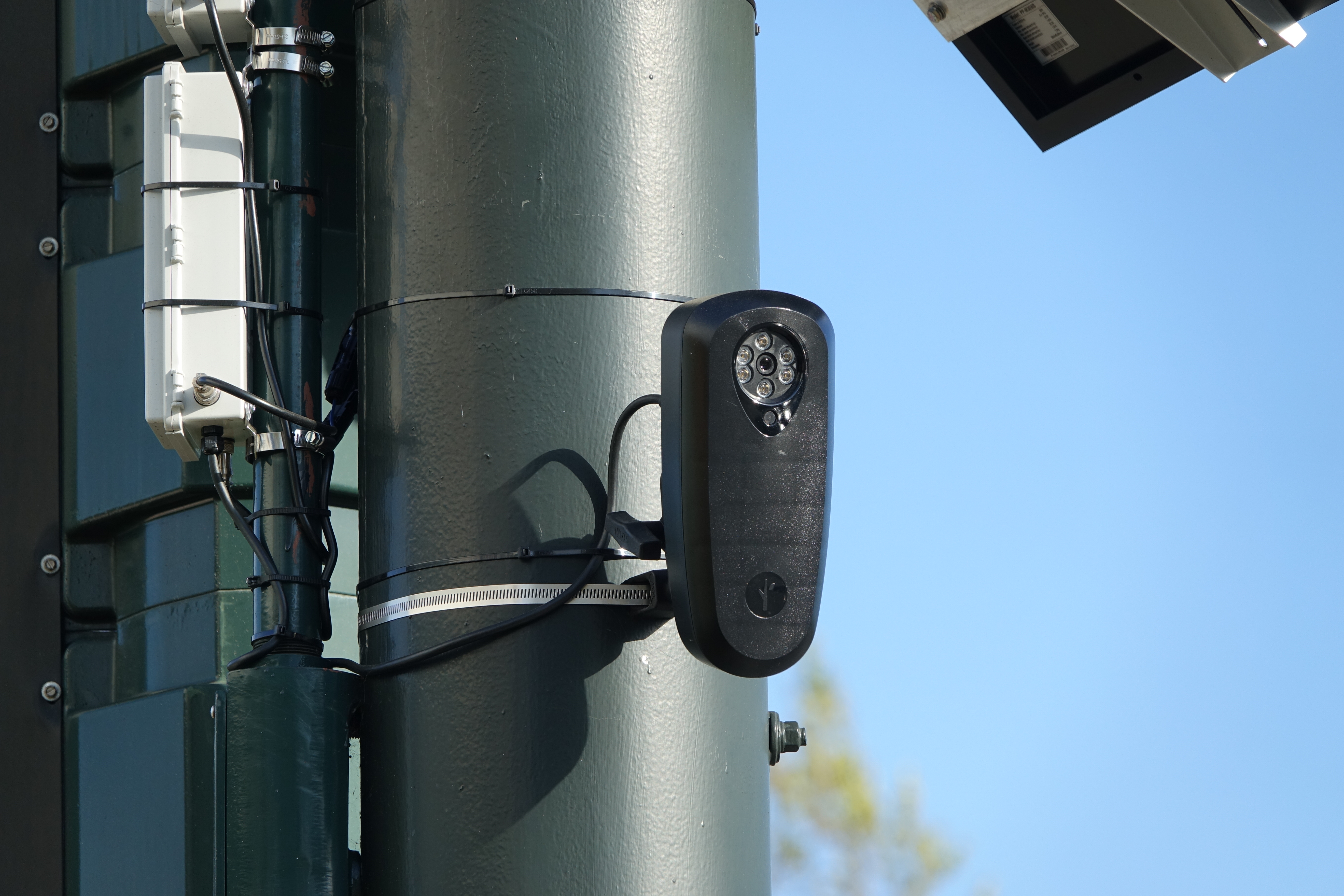
City cameras will use AI to create a “virtual fence” around San Ramon
This week, the San Ramon City Council passed a resolution authorizing a $1.2 million capital improvement project to install more than 82 cameras throughout the city to help investigators solve crimes.
During a February city council meeting, Police Chief Craig Stevens addressed crime data that showed San Ramon experienced an increase in property crimes during 2019. In his report, he credited the uptick in property crime to recent California state legislation including AB109, Proposition 47, and Proposition 57, which greatly minimized the consequences to certain criminal offenders.
Chief Stevens told the city council that while San Ramon remains one of the safest communities relative to the rest of the state, his department is attempting to find solutions to combat the crime increase.
His solution was partially focused on department staffing: SRPD plans to hire 15 officers during the 20/21 fiscal year to offset veteran officers as they retire. In addition, he proposed a $545,000 increase in the $24 million department annual budget to increase staffing in the Dougherty Valley area.
The department’s plan to install more than 82 cameras was presented during a February city council meeting but Chief Stevens said the project has been in the works for nearly five years.
The cameras will be installed at the city’s entry locations to capture vehicles entering or leaving San Ramon, effectively creating a “virtual fence” around the city. Captain Cary Goldberg shared that many of the cameras will be capable of recording characters on both reflective and paper license plates. He added that most cameras will have 5G capability and some will be powered through solar energy.
The captured license plates would be saved to a searchable database for later investigation or allow officers to be notified in real-time if the plate exists in another database such as the National Crime Information Center’s (NCIC) list of reported stolen vehicles.
During a February presentation, Captain Goldberg said that the system’s artificial intelligence (AI) can learn and recognize the make and model of a vehicle, even without a visible license plate. The system would also be capable of detecting “unusual motion,” such as a traffic collision. Captain Goldberg told the council that although the AI software can detect people or faces (either in a vehicle or on a bike), it will not have a facial recognition feature.
The plan will add San Ramon to the growing list of Bay Area cities that use Automatic License Plate Recognition (ALPR) and situational awareness cameras to investigate and solve crimes. Captain Goldberg pointed to the success other agencies have had after installing ALPR cameras: he shared an incident that occurred in Danville where officers used ALPR notifications to arrest a stalking suspect as the suspect arrived at the victim’s residence.
Several councilmembers probed Captain Goldberg about how the department would avoid misuse of the data in the system, which can be stored for as long as 2 years. He said that while the data will be shared with other local police agencies, his department would establish a strict policy for using the database. He assured the council that data captured using the system would only be used for official police investigations, not traffic infractions such as speeding.
Chief Stevens shared his department’s basis for the project, “As a police department and a community, we have no tolerance for crime. We are doing everything we can to develop strategies to deal with that.”
Although most city council members voiced support for the plan, Councilmember O’Loane reacted to the nearly $330,000 increase in cost compared to the initial February proposal and questioned San Ramon’s need for such a comprehensive system with a low crime rate. “My understanding of where we were starting was stationary license plate readers at key intersections… we’ve gone to something between zero and the city of London, and I don’t understand it.”
During public comment, a resident stressed to the council that the project should move forward as soon as possible. Another resident described the system as a “toy for the police” in a city that doesn’t have a crime problem. A resident also voiced disapproval with the system’s 5G capability but conceded they would be satisfied if the system used 4G instead.
The resolution was unanimously passed during Tuesday’s City Council meeting. The vote authorized Mayor Clarkson to execute contract agreements with vendors to install three types of cameras (Vigilant ALPR, Flock ALPR, and situational awareness). Three years of licensing and operation, including the establishment of a dedicated video lab at the police department, is included in the authorized budget.
All systems are expected to be fully operational by the end of 2020.
4 Replies to “City cameras will use AI to create a “virtual fence” around San Ramon”
Comments are closed.

Not sure I like this. Seems like it could infringe on civil rights if abused. AI can’t reason like a human and is only as good as the programming.
This is correct. However, there must be clear guidelines and a recorded process for accessing this information allowing for law enforcement oversight and audits. If designed and managed like many neighboring successful ALPR programs the results provide significant security and no loss of privacy. I’ve been researching this topic for some time and am pleased that San Ramon is taking this thoughtful action to serve its citizens.
IT could infringe on civil rights if users abuse IT to infringe on civil rights, just like every other Information Technology advancement in the past 100 years…
This is ripe for misuse/abuse and the Law of Unintended Consequences. And surely, facial recognition capability is a simple download away